
Understanding Grief through Kierkegaard, Heidegger, and Camus
Grief Without Illusions: Kierkegaard, Heidegger, and Camus on Loss, Meaning, and Living On
Primary Category: Scam Victim Recovery Philosophy
Author:
• Tim McGuinness, Ph.D., DFin, MCPO, MAnth – Anthropologist, Scientist, Polymath, Director of the Society of Citizens Against Relationship Scams Inc.
About This Article
Grief dismantles the familiar structure of life, forcing a confrontation with loss that reshapes identity, relationships, and meaning. Kierkegaard, Heidegger, and Camus each offer distinct yet complementary ways to live within grief without resorting to illusions. Kierkegaard frames it as a confrontation with despair, urging honest self-examination and steady acts of love. Heidegger views grief as a revealing attunement that clarifies life’s finitude and calls for resolute re-engagement with the altered world. Camus places grief within the absurd, advocating revolt, solidarity, and the creation of meaning through simple, tangible actions. Together, these approaches form a practical and philosophical map: name the truth of loss, accept life’s limits, and keep building connections and purpose. Grief remains, but so can dignity, agency, and care. Living on without illusions means shaping life not only by what is gone but also by the deliberate choice to act and to love in what remains.
Note: This article is intended for informational purposes and does not replace professional medical advice. If you are experiencing distress, please consult a qualified mental health professional.
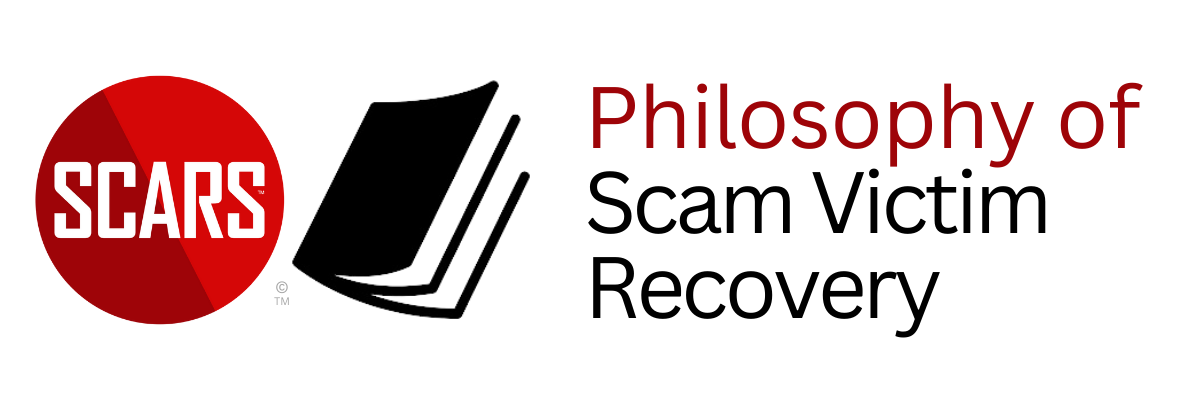
Grief Without Illusions: Kierkegaard, Heidegger, and Camus on Loss, Meaning, and Living On
Author’s Note:
This work approaches grief through the lens of philosophy rather than through purely emotional or therapeutic language. While grief is deeply personal and often raw, the perspectives of Kierkegaard, Heidegger, and Camus offer frameworks that can help illuminate its shape and meaning. Philosophy does not remove the pain, nor does it promise closure. Instead, it can provide vantage points from which to see grief differently, to understand its impact on identity, relationships, and one’s way of living. By examining grief as an existential reality rather than only as an emotional state, it becomes possible to identify new ways of responding to it. These approaches invite reflection, choice, and action, offering paths toward living with loss rather than attempting to escape it. This is not a substitute for emotional support but a complementary perspective for those seeking deeper understanding alongside their journey of recovery.
– Tim McGuinness, Ph.D.
Hook and Context
Grief arrives without invitation and without regard for the life it interrupts. It can come from the death of a loved one, the collapse of a relationship, the shattering of a dream, the destruction of a community, or even the end of a relationship scam.
In every form, grief has the power to dismantle the familiar. It stops daily routines, alters one’s sense of time, and forces a confrontation with realities that can no longer be avoided. The patterns that once gave life structure and meaning are stripped away, leaving a space that feels both unbearably empty and impossibly heavy.
It is not only the absence of someone or something that defines grief. It is the way grief changes the living. A person’s identity, once supported by relationships, roles, and shared experiences, is thrown into question. The world that once felt solid becomes uncertain. Even the smallest actions, such as preparing a meal or walking through a familiar street, can feel foreign. In this way, grief is not simply an emotional reaction; it is a total interruption of life as it was known.
Philosophers have approached this reality from many perspectives, but few have done so with the clarity and directness of Søren Kierkegaard, Martin Heidegger, and Albert Camus. Each faced the reality of loss and suffering without falling into sentimentality or easy comfort. Each resisted the temptation to treat grief as a stage to be passed through or a flaw to be corrected. Instead, they treated grief as a profound human experience that requires attention, honesty, and deliberate choice in how to live with it.
Kierkegaard approached grief through the lens of despair, seeing it as a confrontation with the deepest truths about the self. He saw loss as a call to face the question of who one truly is in relation to the eternal. This was not a matter of simple consolation, but of taking up a task that involved honesty, responsibility, and active love. Heidegger understood grief as a fundamental mood that reveals the nature of existence. For him, loss was not an isolated event but a way the world discloses itself. It exposes the finitude of life and calls for a resolute re-engagement with the world as it now is. Camus, confronting an indifferent universe, placed grief within the framework of the absurd. He did not promise meaning from outside the human condition. Instead, he called for revolt: a clear-eyed refusal to deny reality, combined with solidarity and care for others who live under the same conditions.
These three thinkers offer more than abstract theories. Their work points toward practical ways of living with grief. Kierkegaard urges the cultivation of love that is active even when unseen. Heidegger calls for a grounded acceptance of finitude and the rebuilding of daily life in ways that make it possible to dwell again in the world. Camus invites a defiant commitment to truth, to the living, and to acts of solidarity that resist despair.
Together, their ideas form a map for those who do not want to avoid grief or disguise it, but to live honestly within it. This is not a path that promises the return of what has been lost. It does not aim to erase pain. Instead, it asks how one might carry grief while still building, loving, and engaging with the world. The focus is not on moving past grief but on moving with it, allowing it to shape a life that is still worth living.
This is the promise of examining grief through Kierkegaard, Heidegger, and Camus. By understanding their distinct approaches and the practical postures they suggest, it becomes possible to face loss without retreating into illusions or paralysis. Grief may remain, but so too can the capacity to act, to care, and to find meaning in the life that continues.
What Counts as Grief?
Grief, in this context, is not a passing mood or a temporary sadness. It is a full interruption in the fabric of life. It unsettles the sense of self, alters the perception of time, and reshapes the world in which one moves. When grief arrives, familiar routines lose their weight, once-solid relationships feel unstable, and the ordinary order of events can no longer be trusted. It is a condition that changes not only how reality feels but also how it is understood.
This understanding goes beyond the common image of mourning as tears and longing for what is gone. Grief here is a structural shift, a state in which the person who has suffered loss can no longer be the same as before. It is not simply about what has been taken away. It is about the reconfiguration of the self that follows, sometimes with clarity and sometimes with confusion. It is a break in continuity, and from that break a new way of being must emerge, whether chosen or imposed.
Each of the three philosophers considered here offers a distinct lens on this rupture. For Kierkegaard, grief overlaps with despair, which he calls the sickness unto death. In his account, despair is the condition of not being aligned with the self that one is meant to be, and grief can force this misalignment into the open. It reveals the fragile construction of identity and demands an honest reckoning with it.
For Heidegger, grief shows itself through deep attunements and the reality of being-toward-death. These moods are not distractions from life but pathways into a more truthful encounter with existence. Grief can strip away the distractions that usually keep mortality at a distance, making the finiteness of life impossible to ignore. It shifts a person into a more fundamental awareness of being itself.
For Camus, grief lives within the absurd. It is an acute moment when the unreasonable silence of the world becomes undeniable. In this silence, the old systems of meaning collapse, leaving a choice: to submit to despair or to engage in revolt, living fully without the comfort of ultimate answers. In this light, grief becomes part of the confrontation with life’s lack of inherent order, yet also an opening to create meaning in defiance of that lack.
The scope of grief under discussion extends beyond personal bereavement. It includes the devastation that follows collective catastrophes such as war, natural disaster, or mass injustice. It also includes the quieter but equally powerful losses that erode identity: the end of a vocation, the collapse of a community, or the shattering of a personal vision for the future. In each case, grief is a force that dismantles the known world and requires the building of another, even if the pieces used in that reconstruction are unfamiliar or incomplete.
Kierkegaard: Grief as Despair Transformed into Faithful Agency
For Kierkegaard, grief is never a neutral state. It confronts the self with a demand. In his framework, every human being is a relation that must relate itself to itself and to the Power that established it. Loss disturbs this relation and often reveals its instability. In the moment of deep grief, the scaffolding that has supported the self may collapse. This collapse often takes the form of despair, which Kierkegaard describes as either the refusal to be oneself or the determination to be oneself without any dependence on the divine.
The Self Under Pressure
When grief strikes, it does not simply wound the heart. It presses upon the very structure of identity. The person who suffers finds that the loss calls into question who they are, why they exist, and how they are to live in the world that now feels altered beyond recognition. This confrontation is unavoidable because grief removes the distractions and illusions that normally hide the fragility of the self. In Kierkegaard’s terms, the self must decide whether to face its origin and purpose honestly or to retreat into evasions. Despair emerges when the self rejects its dependence on the source of its being, whether through active defiance or by drifting into a life built on avoidance.
The Arc of Response
Kierkegaard describes a movement that can occur within the grieving self. The initial stage is the aesthetic, where one attempts to escape pain through distraction, pleasure, or self-stylization. Here grief is avoided, not faced. If the self moves beyond evasion, it enters the ethical stage, where one accepts responsibility and lives in sincerity, fulfilling duties as they are understood. Yet for Kierkegaard, grief presses even further, toward the religious stage, where the self lives in trust and hope before God. This is not a hope that rests on outcomes but a willingness to remain faithful even when the outcome is hidden.
The lived form of this faith is what Kierkegaard calls “works of love.” In grief, this means the quiet, consistent acts that express care for others and for the world without seeking recognition. It is patience in daily life, hidden acts of service, and fidelity to obligations even when they feel heavy. There is no trading in grand gestures here. The work is to love in the small spaces of ordinary days.
Practice Points
Kierkegaard’s vision offers several practical moves for those who carry grief. The first is to name despair honestly. This requires the courage to admit when one is unwilling to face the truth of the self or is resisting dependence on anything beyond one’s own strength. The second is to return to daily obligations that express love without spectacle. This grounds the self in reality and keeps grief from collapsing into self-absorption. The third is to understand hope as a task rather than a feeling. Hope, in this view, is the active willing of the good in relation to what is eternal, regardless of shifting moods or circumstances.
Limits and Strengths
The strength of Kierkegaard’s account is that it takes the collapse of grief seriously and offers a path for converting that collapse into steady ethical and spiritual work. It refuses to minimize the devastation of loss and insists on the necessity of personal transformation. The limit is that his framework presumes a theistic horizon, which may not be shared by all. Yet even without the theology, the pattern remains valuable. Honest self-reckoning, the discipline of small acts of love, and the choice to live faithfully to one’s obligations are principles that can be carried into secular life. This bridge makes Kierkegaard’s approach more than a religious vision; it becomes a durable human one.
Heidegger: Grief as Disclosedness, Finitude, and Care
For Heidegger, grief is more than an emotional state. It is an attunement that discloses the structure of human existence. Through grief, the ways of being-in-the-world, being-with-others, and being-toward-death are revealed with a clarity that ordinary life often conceals. In this sense, grief does not merely accompany loss; it opens a new awareness of what it means to exist at all.
Attunement and World
In Heidegger’s account, moods are not private embellishments to inner life. They are ways the world is revealed and made significant. A mood shapes how the world matters before any deliberate thought arises. Grief, as a mood, alters the field of meaning itself. What once appeared vibrant and important may now seem hollow or emptied of weight. The loss that produces grief can rearrange how significance is distributed across the world, creating an acute awareness that the familiar order has shifted or collapsed. This is not an illusion but a disclosure of the fact that meaning is never fixed, and that it can be broken apart by the realities of life and death.
Being-Toward-Death
Central to Heidegger’s thought is the idea that one’s own death is the most personal and nontransferable possibility. It is not an event to be calculated or predicted but a fundamental condition that shapes how a person can live. Grief can summon an individual from the anonymity of the “they” — the undifferentiated public that drifts along in everyday routines — toward a resolute acceptance of finitude. In this moment, life is owned more deliberately, not because death has become predictable, but because its inevitability now stands in view.
The Death of Others
The death of another is not merely an abstract example of mortality. It tears into the structure of being-with, which is the shared existence of people in a world. When someone dies, the world changes. The places, gestures, and shared practices once sustained by that relationship are altered. Language itself can be marked by absence when there is no longer someone to receive familiar words. Mourning becomes a process of re-learning how to dwell in a world where that shared being no longer exists.
Resoluteness and Care
For Heidegger, a genuine response to grief is not found in sentiment alone. It is a stance of resoluteness, in which a person gathers the facts of their thrown existence, chooses new projects, and directs care toward what remains. Resoluteness is not withdrawal from the world but an intentional re-engagement with it, acknowledging loss while taking responsibility for living meaningfully in its aftermath.
Practice Points
From this framework, several practical steps emerge. First, slow down and let the mood speak, allowing grief to reveal what has truly changed. Second, name what has ended and decide what must now be taken up in its place. Third, begin rebuilding everyday dwelling through small, repeatable acts that re-establish presence and belonging in the world.
Limits and Strengths
The strength of Heidegger’s approach is that it treats grief as a way of revealing the world rather than reducing it to a personal psychological condition. It acknowledges that grief changes reality itself for the one who mourns. The limit is that it lacks explicit ethical guidance and can feel austere or detached from the moral dimension of loss. A bridge forward can be found by pairing Heidegger’s resoluteness with concrete acts of care for others and for the places in which life continues. This combination allows the clarity of grief’s disclosure to become the ground for renewed and responsible living.
Camus: Grief Inside the Absurd, Answered by Revolt and Solidarity
For Camus, grief belongs within the territory of the absurd. The absurd arises when human beings, with their deep longing for meaning and justice, meet a universe that offers no final answers and no guarantees. Grief is one of the most direct encounters with this gap. The death of a loved one, the destruction of a community, or the collapse of a shared future forces the awareness that the world is indifferent to human hopes. There is no inherent reason for such loss, yet it arrives all the same.
The Absurd Field
The absurd is not just an intellectual concept for Camus; it is an emotional and existential field. Loss makes it visible. Human beings yearn for coherence, but grief shows that events can occur without explanation or fairness. The person who mourns faces a double recognition: the specific absence of what is loved, and the broader reality that the world’s order does not bend to human expectations. This recognition is often painful, but Camus saw it as a truth that must be faced without illusion.
Revolt as Answer
In Camus’s thought, revolt is the refusal to look away or to cover over the truth with consoling stories. Revolt is not about violent rebellion but about a sustained, clear-eyed refusal to lie to oneself or to others. It involves saying yes to the reality of loss and to the possibility of life alongside it, without appeal to grand explanations or eternal guarantees. Revolt is lived out in daily acts of integrity, courage, and presence. In grief, revolt means refusing to abandon the work of living and the work of caring, even when the universe offers no reassurance that such efforts will be rewarded.
Solidarity and Simple Goods
For Camus, the proper stance in the face of grief is solidarity. This is not sentimental unity but an active commitment to stand with others, to relieve suffering where possible, and to create small islands of meaning in a sea of indifference. Camus named certain simple goods as essential: caring for the living, easing the burdens of others, doing honest work, nurturing friendship, and seeking beauty. None of these solve grief, but they are the right ways to inhabit life together in its presence. They keep people connected and human in conditions that could otherwise produce isolation and despair.
The Ethic of Limits
Camus warned against the pursuit of purity or the demand for perfect moral clarity. No one is entirely free from contradiction or weakness. The ethic of limits accepts human imperfection while continuing to act in ways that preserve dignity. In grief, this means helping where one can, accepting that help will be partial and imperfect, and resisting the temptation to become hardened or cruel. Remaining open to feeling, even when it hurts, is a way of keeping faith with both the living and the dead.
Practice Points
From Camus’s view, the practice of living with grief involves several commitments. Tell the truth about what has happened, without distortion or denial. Do the helpful thing that is in reach today, even if it is small. Share bread, time, competence, and presence with others. Each of these steps asserts life in the face of loss.
Limits and Strengths
The strength of Camus’s approach lies in its moral clarity and refusal of false hope. It faces grief without seeking to explain it away. Its limitation is that it can feel sparse when the weight of loss is overwhelming. A bridge forward can be found in supplementing revolt and solidarity with rituals, art, and community life. These can give form and rhythm to endurance, allowing grief to be met not only with resistance but also with shared creation and remembrance.
Side-By-Side: What Changes, What Holds
Placed next to each other, the three perspectives create a kind of map for navigating grief. Each offers a distinct source of meaning, a unique language for naming loss, and a practical posture for living through it. Kierkegaard locates meaning in the divine relation. For him, grief is the moment when the self must decide whether it will live in dependence on the power that established it or attempt to stand apart. His language moves between despair and hope, with despair marking the refusal to accept one’s self in relation to God, and hope representing the task of willing the good in that eternal frame. Practically, this becomes a call to love one’s neighbor through steady, concrete acts that do not depend on public recognition.
Heidegger roots meaning in finite existence and the care that arises from it. Grief is an attunement that reveals how the world has changed, how certain ways of being-with are no longer possible. His vocabulary speaks of attunement, resoluteness, and being-toward-death. He does not offer consolation but a summons to own one’s finitude, gather the thrown facts of existence, and rebuild dwelling through small, repeatable acts of care.
Camus begins with the recognition of the absurd, where human longing meets an indifferent universe. For him, grief is the sharp edge of that encounter, the moment when the gap between desire and reality is undeniable. His language is that of the absurd and revolt, in which revolt is the refusal to lie and the decision to stand with others without appeal to grand consolations. His practice centers on solidarity, relief of suffering, honest work, friendship, and beauty.
Despite their differences, all three share a refusal of denial. None encourage the numbing of grief or the hiding of loss behind distraction. Each demands a conscious decision about how to live forward after the rupture. They press the question of what one will hold onto and what one will release.
Tensions remain. Kierkegaard’s transcendence in God stands in contrast to Heidegger’s and Camus’ immanence. Kierkegaard trusts in the eternal, while Heidegger calls for ownership within finite time, and Camus insists on disciplined lucidity without metaphysical promises. These tensions are not flaws. They are boundaries that mark where one philosophical path ends and another begins.
An integrated posture can take strength from all three. One can adopt Kierkegaard’s insistence on honest self-naming and his ethic of neighbor-love, while also taking from Heidegger the acceptance of finitude and the discipline of rebuilding everyday life. From Camus, one can take the practice of daily solidarity and the courage to tell the truth without needing a cosmic guarantee. Together, these threads weave a way of living with grief that is both honest and active: name what is lost, own what remains, and join with others to keep life human.
Practices, Rituals, and Habits
Philosophical insights remain abstract until they are woven into the fabric of daily life. Grief is not resolved by ideas alone; it must be lived through concrete actions that help the bereaved inhabit their changed reality. Practices, rituals, and habits become the structure that holds the weight of loss while keeping life in motion. These practices fall into four broad areas: naming, dwelling, solidarity, and reading.
Naming Practices
The first work of grief is to name the loss. Naming practices acknowledge that what has been lost was real, valuable, and still worthy of recognition. Writing letters to the dead is one such practice. These letters are not an attempt to speak into the void with the expectation of a reply, but rather a way to articulate unsaid words and to recognize the ongoing influence of the departed in the life of the living. Some write them regularly, on birthdays or anniversaries; others do it only once, as a formal acknowledgment.
Testimony can also take the form of speaking aloud to others—whether in private conversation, at a memorial, or in recorded form—to tell the story of the loss. This might include recounting what happened, what the relationship meant, and how life has changed since. Anniversaries provide an important structure for these practices. Instead of allowing the date to pass in silence or to be avoided altogether, it can be reclaimed as a time to speak truthfully about the person or event, resisting the temptation to edit the story for comfort or convenience.
Dwelling Practices
Once the loss is named, the challenge becomes learning how to inhabit a world that has been altered by it. Dwelling practices are small, repeatable actions that reestablish one’s relationship with place, time, and routine. Slow walks in familiar locations, such as a neighborhood street or a well-loved park, allow the body to reacquaint itself with the world. These walks are not about exercise or distraction, but about quiet presence, noticing the same trees, buildings, or pathways that existed before and still remain now.
Shared meals are another form of dwelling. Grief can isolate, and eating alone for long stretches deepens that isolation. Inviting others to the table, or accepting an invitation, is a way to affirm connection. It can be as simple as making a pot of soup and sharing it, without ceremony or pressure for conversation.
Small duties resumed also contribute to dwelling. Repairing a household item, tending a garden, or preparing food for the week may seem minor, yet these actions reassert the ability to act in a world that grief has made unfamiliar. By performing these simple tasks, the bereaved begin to stitch their life back together, one deliberate act at a time.
Solidarity Practices
Grief is not only a private condition; it is also a communal reality. Solidarity practices recognize that while each person’s loss is unique, the experience of mourning is shared across human life. Participation in grief groups offers a space where language and witness are shared. These groups are not meant to erase individual pain, but to provide the reassurance that others have navigated similar terrain.
Volunteer work channels the energy of grief outward. Serving meals at a shelter, organizing community aid, or contributing to disaster relief efforts transforms private sorrow into public care. Practical support networks—whether organized formally or through informal agreements—allow communities to function even when members are struggling. This might mean delivering groceries to someone who is grieving, offering rides to appointments, or helping with childcare.
Creative memorials are another important solidarity practice. These can be public, such as a dedicated park bench or a mural, or private, like a piece of art, a handmade quilt, or a planted tree. They create something lasting that honors the memory of the lost person while contributing beauty or utility to the living world.
Reading Practices
Philosophy offers not only conceptual clarity but also a form of companionship in grief. Reading practices draw from this resource, using short, repeatable passages to maintain a steady connection to guiding ideas. Returning to Kierkegaard’s meditations on works of love can remind the reader of the call to serve others quietly and faithfully. Heidegger’s descriptions of dwelling can affirm the importance of rebuilding a life that feels inhabitable. Camus’ affirmations of revolt and solidarity can reinforce the commitment to live truthfully and in connection with others.
The point of reading in this way is not to acquire new information but to return, again and again, to certain words until they become part of the reader’s internal landscape. Over time, these readings can work like a map, offering familiar landmarks when disorientation returns.
The Purpose of Practice
All these practices—naming, dwelling, solidarity, and reading—share a common aim: to transform grief from an isolated rupture into a lived relationship with memory, responsibility, and continued life. They resist the extremes of romanticizing grief as something noble or minimizing it as something to “get over.” Instead, they provide a rhythm in which loss is neither hidden nor allowed to dominate completely.
By taking philosophical insight into the realm of action, the bereaved can create a way of living that honors what has been lost while still making room for what remains. This is not a method for removing pain, but a way of carrying it with steadiness, clarity, and dignity.
Missteps to Avoid
Grief is a demanding teacher, and the ways people respond to it can either deepen the wound or allow it to be carried with greater steadiness. While there is no single correct method for moving through grief, there are recurring mistakes that tend to block the work of living with loss. Recognizing these missteps can help prevent the compounding of pain.
One of the most common errors is rushing toward closure. The cultural appetite for resolution often leads people to adopt empty slogans or quick consolations that mask the reality of the loss. Phrases meant to comfort, such as “everything happens for a reason” or “time heals all wounds,” can actually shut down honest conversation. They imply that the bereaved should have already reached a point of acceptance, when in truth, grief changes form over time rather than disappearing.
Another misstep is treating grief as a private defect. This reduces mourning to a problem of individual psychology, as if it were merely a matter of weakness or maladjustment. In reality, grief is a disruption of the shared world. The death of a person, the destruction of a place, or the loss of a way of life alters the spaces, relationships, and routines in which people live together. When grief is understood only as an internal flaw, the broader need to accommodate that disruption is ignored.
There is also the danger of abandoning action entirely in favor of theorizing. Reflection has its place, but without lived practice it becomes a form of evasion. The opposite error is equally common—throwing oneself into constant activity in order to outrun thought and feeling. Both extremes avoid the slow integration of loss into life. A balanced approach allows room for thought, feeling, and deliberate action in turn.
Policing grief is another harmful tendency. This happens when people impose rigid timelines or purity tests for mourning, whether on themselves or others. Some expect that grief should fade after a set period, while others believe it must be maintained at full intensity as proof of loyalty. Both approaches distort the process, turning grief into something that must be justified or defended rather than lived.
Avoiding these missteps does not make grief easy, but it helps keep the path open. The work is not to force an ending or to perform grief according to outside expectations, but to engage with it truthfully while still making room for living.
Conclusion
Grief alters the ground on which life is lived. It strips away the patterns, relationships, and certainties that once made the world feel stable, leaving the bereaved to navigate a reality that no longer fits familiar maps. Kierkegaard, Heidegger, and Camus each faced this condition without retreating into false comfort. They understood that grief is not an episode to outlast but a condition to live within, and that the task is not to erase it but to shape life alongside it.
From Kierkegaard comes the call to confront despair directly and to act in quiet, steadfast love. This is an insistence on honesty about the state of the self and a refusal to let grief collapse into isolation or bitterness. Heidegger offers the recognition that grief reveals the structure of existence itself, bringing finitude and change into sharper focus. His response is resoluteness — a conscious decision to rebuild the rhythms of daily life in the altered world. Camus, meeting grief inside the absurd, calls for revolt and solidarity: to stand without illusions, to care for others, and to create meaning through small, tangible acts.
These perspectives are not competing prescriptions but complementary stances. Each holds a part of the work that grief demands: naming the truth of loss, accepting the limits of human life, and continuing to live in ways that preserve dignity and connection. Together, they offer a form of guidance that neither denies the depth of grief nor surrenders to its weight.
Living without illusions is not the same as living without hope. It means refusing to disguise grief while still claiming the possibilities that remain. In this way, life after loss can be shaped not only by what is absent but also by the deliberate choice to keep acting, loving, and building in the world that endures.
Article Glossary
- Absurd: A condition described by Camus where human longing for meaning meets an indifferent world. Grief exposes this gap and demands a clear, honest response.
- Aesthetic Stage: Kierkegaard’s mode of life focused on distraction and pleasure. In grief, it shows up as escape rather than engagement.
- Anniversaries: Dates used to name the loss with intention. You mark them to speak truthfully about the person or event.
- Attunement: Heidegger’s term for a mood that reveals how the world matters. Grief changes this attunement and shows what has shifted.
- Being-in-the-World: Heidegger’s description of human existence as always situated in places, tasks, and relations. Grief alters this field of meaning.
- Being-Toward-Death: Heidegger’s view of living with one’s finitude in sight. Grief brings this awareness forward and calls for deliberate living.
- Being-With: The shared structure of life with others. Death changes this structure and reshapes daily meaning.
- Creative Memorials: Public or private tributes such as art, quilts, trees, or plaques. They honor the lost and add lasting value to the living world.
- Despair: Kierkegaard’s name for a misaligned self. Grief can expose this state and invite honest change.
- Disclosedness: Heidegger’s idea that grief reveals the truth of a changed world. It shows what no longer holds and what now matters.
- Dwelling: Heidegger’s focus on living in place through steady routines. In grief, you rebuild daily presence with small, repeatable acts.
- Dwelling Practices: Simple actions such as slow walks, shared meals, and small repairs. They help you inhabit the altered world again.
- Ethical Stage: Kierkegaard’s mode of life that accepts duty and responsibility. In grief, it means sincere action grounded in truth.
- Ethic of Limits: Camus’s call to accept human imperfection while acting with dignity. In grief, you help where you can and refuse cruelty.
- Finitude: The fact that life is limited. Grief makes this fact vivid and asks for choices that fit reality.
- Grief: A structural interruption of life, not just a feeling. It changes identity, time, and how the world is understood.
- Indifferent Universe: Camus’s view that the world offers no final answers. Grief makes this indifference visible.
- Letters to the Dead: Writing that names the loss and what remains unsaid. You use it to acknowledge the ongoing bond.
- Missteps to Avoid: Common errors such as rushing closure, treating grief as defect, overthinking without action, constant busyness, and policing grief.
- Mourning: The ongoing work of living with loss. It reshapes routines, relations, and meaning over time.
- Naming Practices: Speech or writing that states the loss plainly. You use them to keep truth in view.
- Reading Practices: Short passages returned to often. They keep guiding ideas present during hard weeks.
- Religious Stage: Kierkegaard’s life before God marked by trust and hope beyond outcomes. In grief, it supports faithful agency.
- Resoluteness: Heidegger’s stance of owning facts and choosing new projects. You turn clarity into responsible action.
- Revolt: Camus’s refusal to deny reality. In grief, you tell the truth and keep living and caring without false comfort.
- Self as Relation: Kierkegaard’s view of the self as a relation that must relate rightly to itself and its source. Grief tests this relation.
- Sickness Unto Death: Kierkegaard’s term for despair as a spiritual illness. Grief can reveal it and press for honest realignment.
- Simple Goods: Camus’s list of basic, sustaining goods such as honest work, friendship, care for the living, and beauty.
- Solidarity: Camus’s call to stand with others and relieve suffering. It turns private sorrow into shared care.
- Solidarity Practices: Concrete acts such as groups, volunteer work, and mutual aid. They connect private grief to public care.
- Testimony: Speaking the truth of the loss to others. It affirms value and resists silence.
- The “They”: Heidegger’s name for anonymous public norms. Grief can pull you out of this drift into owned choices.
- Thrown Existence: Heidegger’s idea that life begins in conditions not chosen. Grief forces you to gather those facts and respond.
- Works of Love: Kierkegaard’s quiet, steady acts of care that seek no recognition. In grief, they become daily practice.
-/ 30 /-
What do you think about this?
Please share your thoughts in a comment below!
TABLE OF CONTENTS
- Grief Without Illusions: Kierkegaard, Heidegger, and Camus on Loss, Meaning, and Living On
- Grief Without Illusions: Kierkegaard, Heidegger, and Camus on Loss, Meaning, and Living On
- Author’s Note:
- Hook and Context
- What Counts as Grief?
- Kierkegaard: Grief as Despair Transformed into Faithful Agency
- Heidegger: Grief as Disclosedness, Finitude, and Care
- Camus: Grief Inside the Absurd, Answered by Revolt and Solidarity
- Side-By-Side: What Changes, What Holds
- Practices, Rituals, and Habits
- Missteps to Avoid
- Conclusion
CATEGORIES
![NavyLogo@4x-81[1] Understanding Grief through Kierkegaard, Heidegger, and Camus - 2025](https://scamsnow.com/wp-content/uploads/2025/04/NavyLogo@4x-811.png)
ARTICLE META
Important Information for New Scam Victims
- Please visit www.ScamVictimsSupport.org – a SCARS Website for New Scam Victims & Sextortion Victims.
- SCARS Institute now offers its free, safe, and private Scam Survivor’s Support Community at www.SCARScommunity.org – this is not on a social media platform, it is our own safe & secure platform created by the SCARS Institute especially for scam victims & survivors.
- SCARS Institute now offers a free recovery learning program at www.SCARSeducation.org.
- Please visit www.ScamPsychology.org – to more fully understand the psychological concepts involved in scams and scam victim recovery.
If you are looking for local trauma counselors, please visit counseling.AgainstScams.org
If you need to speak with someone now, you can dial 988 or find phone numbers for crisis hotlines all around the world here: www.opencounseling.com/suicide-hotlines
Statement About Victim Blaming
Some of our articles discuss various aspects of victims. This is both about better understanding victims (the science of victimology) and their behaviors and psychology. This helps us to educate victims/survivors about why these crimes happened and not to blame themselves, better develop recovery programs, and help victims avoid scams in the future. At times, this may sound like blaming the victim, but it does not blame scam victims; we are simply explaining the hows and whys of the experience victims have.
These articles, about the Psychology of Scams or Victim Psychology – meaning that all humans have psychological or cognitive characteristics in common that can either be exploited or work against us – help us all to understand the unique challenges victims face before, during, and after scams, fraud, or cybercrimes. These sometimes talk about some of the vulnerabilities the scammers exploit. Victims rarely have control of them or are even aware of them, until something like a scam happens, and then they can learn how their mind works and how to overcome these mechanisms.
Articles like these help victims and others understand these processes and how to help prevent them from being exploited again or to help them recover more easily by understanding their post-scam behaviors. Learn more about the Psychology of Scams at www.ScamPsychology.org
SCARS INSTITUTE RESOURCES:
If You Have Been Victimized By A Scam Or Cybercrime
♦ If you are a victim of scams, go to www.ScamVictimsSupport.org for real knowledge and help
♦ SCARS Institute now offers its free, safe, and private Scam Survivor’s Support Community at www.SCARScommunity.org/register – this is not on a social media platform, it is our own safe & secure platform created by the SCARS Institute especially for scam victims & survivors.
♦ Enroll in SCARS Scam Survivor’s School now at www.SCARSeducation.org
♦ To report criminals, visit https://reporting.AgainstScams.org – we will NEVER give your data to money recovery companies like some do!
♦ Follow us and find our podcasts, webinars, and helpful videos on YouTube: https://www.youtube.com/@RomancescamsNowcom
♦ Learn about the Psychology of Scams at www.ScamPsychology.org
♦ Dig deeper into the reality of scams, fraud, and cybercrime at www.ScamsNOW.com and www.RomanceScamsNOW.com
♦ Scam Survivor’s Stories: www.ScamSurvivorStories.org
♦ For Scam Victim Advocates visit www.ScamVictimsAdvocates.org
♦ See more scammer photos on www.ScammerPhotos.com
You can also find the SCARS Institute’s knowledge and information on Facebook, Instagram, X, LinkedIn, and TruthSocial
Psychology Disclaimer:
All articles about psychology and the human brain on this website are for information & education only
The information provided in this and other SCARS articles are intended for educational and self-help purposes only and should not be construed as a substitute for professional therapy or counseling.
Note about Mindfulness: Mindfulness practices have the potential to create psychological distress for some individuals. Please consult a mental health professional or experienced meditation instructor for guidance should you encounter difficulties.
While any self-help techniques outlined herein may be beneficial for scam victims seeking to recover from their experience and move towards recovery, it is important to consult with a qualified mental health professional before initiating any course of action. Each individual’s experience and needs are unique, and what works for one person may not be suitable for another.
Additionally, any approach may not be appropriate for individuals with certain pre-existing mental health conditions or trauma histories. It is advisable to seek guidance from a licensed therapist or counselor who can provide personalized support, guidance, and treatment tailored to your specific needs.
If you are experiencing significant distress or emotional difficulties related to a scam or other traumatic event, please consult your doctor or mental health provider for appropriate care and support.
Also read our SCARS Institute Statement about Professional Care for Scam Victims – click here
If you are in crisis, feeling desperate, or in despair, please call 988 or your local crisis hotline – international numbers here.
More ScamsNOW.com Articles
A Question of Trust
At the SCARS Institute, we invite you to do your own research on the topics we speak about and publish. Our team investigates the subject being discussed, especially when it comes to understanding the scam victims-survivors’ experience. You can do Google searches, but in many cases, you will have to wade through scientific papers and studies. However, remember that biases and perspectives matter and influence the outcome. Regardless, we encourage you to explore these topics as thoroughly as you can for your own awareness.


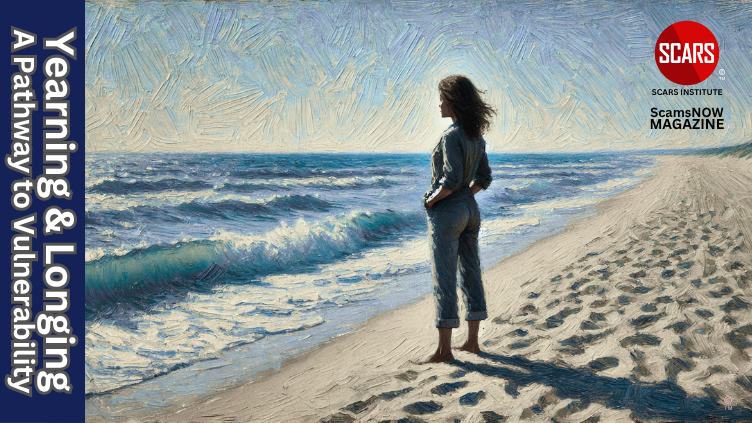

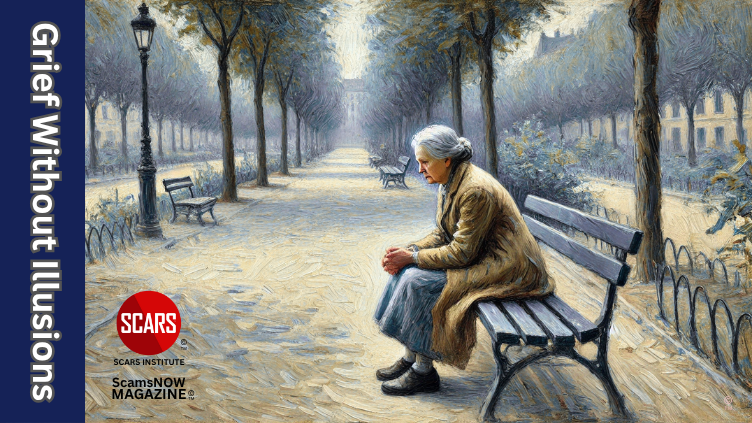







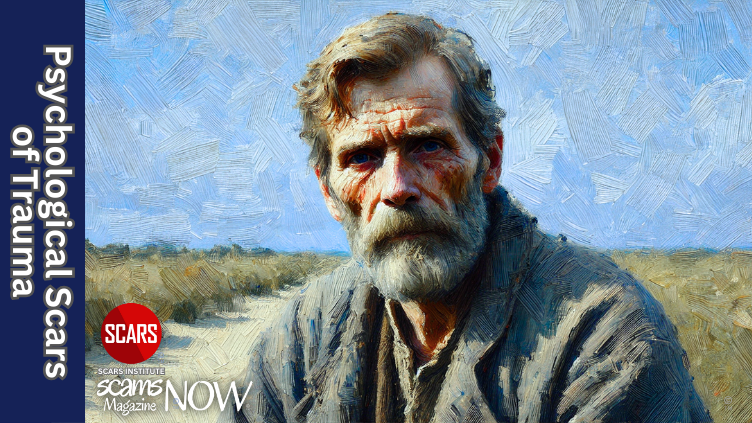
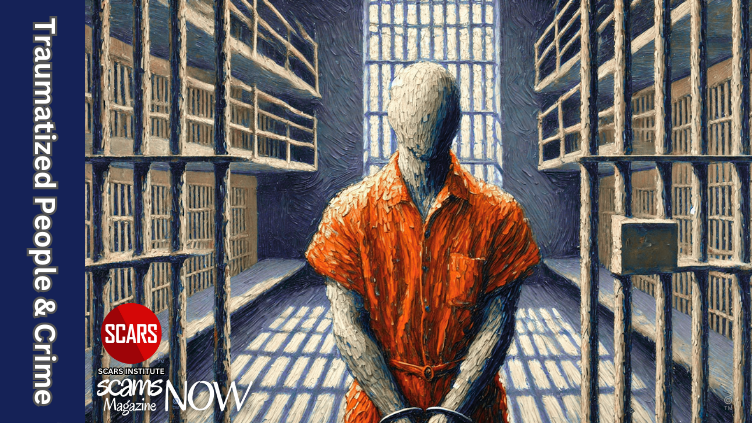


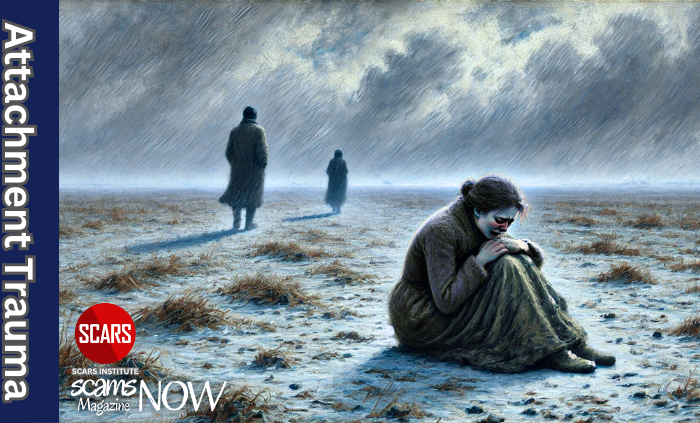
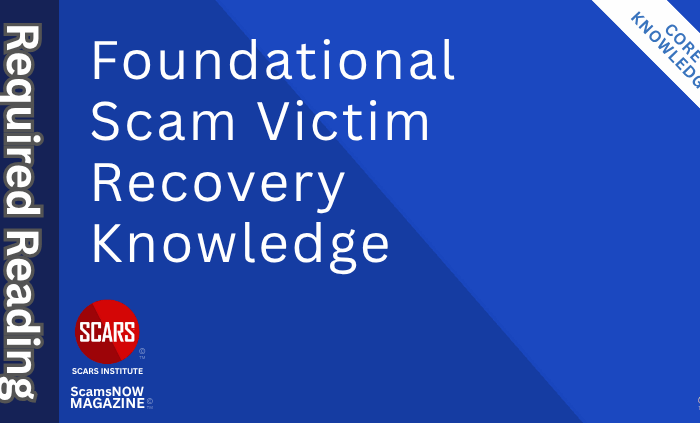

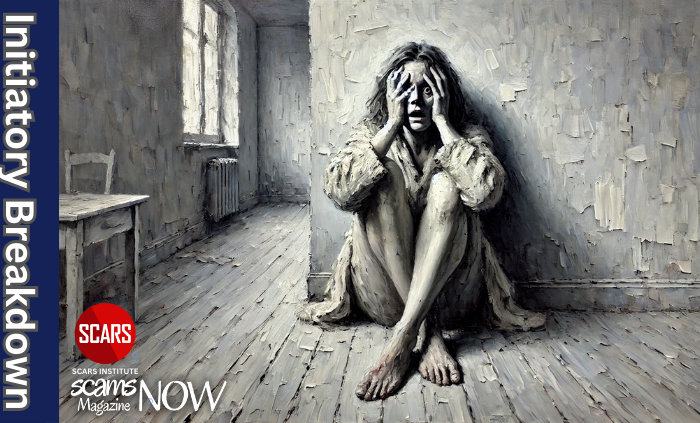
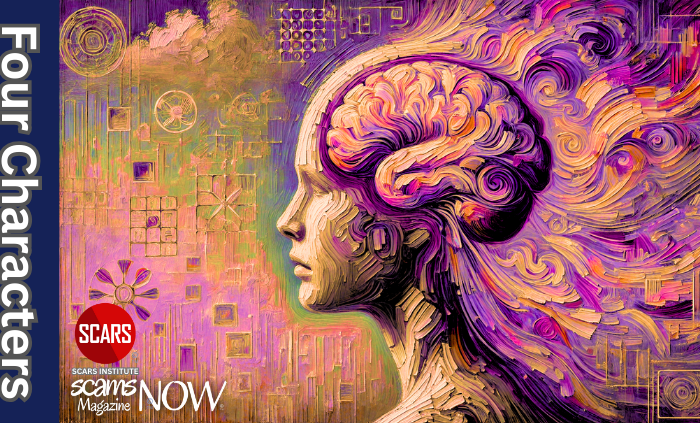
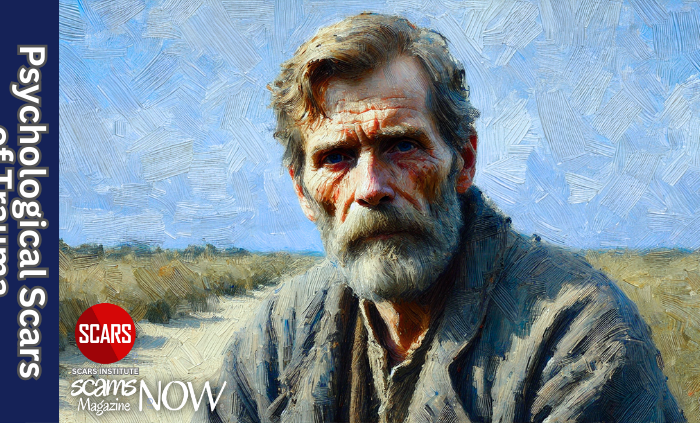


![scars-institute[1] Understanding Grief through Kierkegaard, Heidegger, and Camus - 2025](https://scamsnow.com/wp-content/uploads/2025/04/scars-institute1.png)
![niprc1.png1_-150×1501-1[1] Understanding Grief through Kierkegaard, Heidegger, and Camus - 2025](https://scamsnow.com/wp-content/uploads/2025/04/niprc1.png1_-150x1501-11.webp)
